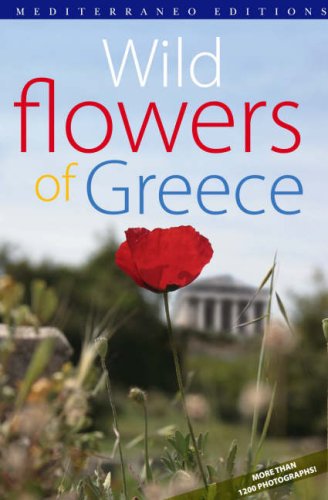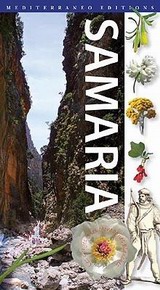GRΕΕΝ ΡLΑΝΤS & ΗΕRΒS ΟF GRΕΕCΕ
Εκδότης Mediterraneo Editions , ISBN 9789606848421
Greece is a country in which dietary traditions have been formed more or less over millenia. Research has shown that the domestication and systematic utilisation of wild plant species, such as the lentil and types of grain, already began during the Mesolithic period. Gradually, and with the evolution of Neolithic societies, two commodities acquired a dominant position: olive oil in cooking and honey as a sweetener. For example, the clay tablets in Linear B script from Crete, dating from the second half of the 2nd millenium BC, contain the names of many plants, wild greens, herbs, and foodstuffs, such as flour, mint, coriander, barley, cumin, fennel, celery, garlic, sesame, figs, olives and olive oil. From these tablets, it appears that there was also systematic use of aromatic plants such as bay laurel, oregano, thyme, dill etc. in cookery. In our times, the tradition of the gathering of wild greens and herbs continues uninterrupted. It can certainly be said that the diet in many parts of Greece and in particular on Crete, the islands, and in the Peloponnese differs very little from that of the people of antiquity, since it includes little meat but large amounts of vegetables, pulses, fruit and abundant olive oil. Which green plants have contributed to this Greek dietary phenomenon? Which herbs are used to flavour food? Which plants are used traditionally in folk medicine? All of these species of plant are presented in this book, along with practical information, references to history and mythology, and a multitude of photographs.
Περίληψη
Greece is a country in which dietary traditions have been formed more or less over millenia. Research has shown that the domestication and systematic utilisation of wild plant species, such as the lentil and types of grain, already began during the Mesolithic period. Gradually, and with the evolution of Neolithic societies, two commodities acquired a dominant position: olive oil in cooking and honey as a sweetener. For example, the clay tablets in Linear B script from Crete, dating from the second half of the 2nd millenium BC, contain the names of many plants, wild greens, herbs, and foodstuffs, such as flour, mint, coriander, barley, cumin, fennel, celery, garlic, sesame, figs, olives and olive oil. From these tablets, it appears that there was also systematic use of aromatic plants such as bay laurel, oregano, thyme, dill etc. in cookery. In our times, the tradition of the gathering of wild greens and herbs continues uninterrupted. It can certainly be said that the diet in many parts of Greece and in particular on Crete, the islands, and in the Peloponnese differs very little from that of the people of antiquity, since it includes little meat but large amounts of vegetables, pulses, fruit and abundant olive oil. Which green plants have contributed to this Greek dietary phenomenon? Which herbs are used to flavour food? Which plants are used traditionally in folk medicine? All of these species of plant are presented in this book, along with practical information, references to history and mythology, and a multitude of photographs.
Πληροφορίες προϊόντος
- Συγγραφέας Παπιομύτογλου, Βαγγέλης
- Eκδότης Mediterraneo Editions
- ISBN 9789606848421
- Κωδικός Ευριπίδη 040100059680
- Έτος κυκλοφορίας 2011
- Σελίδες 136
- Διαστάσεις 21χ14
- Βάρος 380 gr






